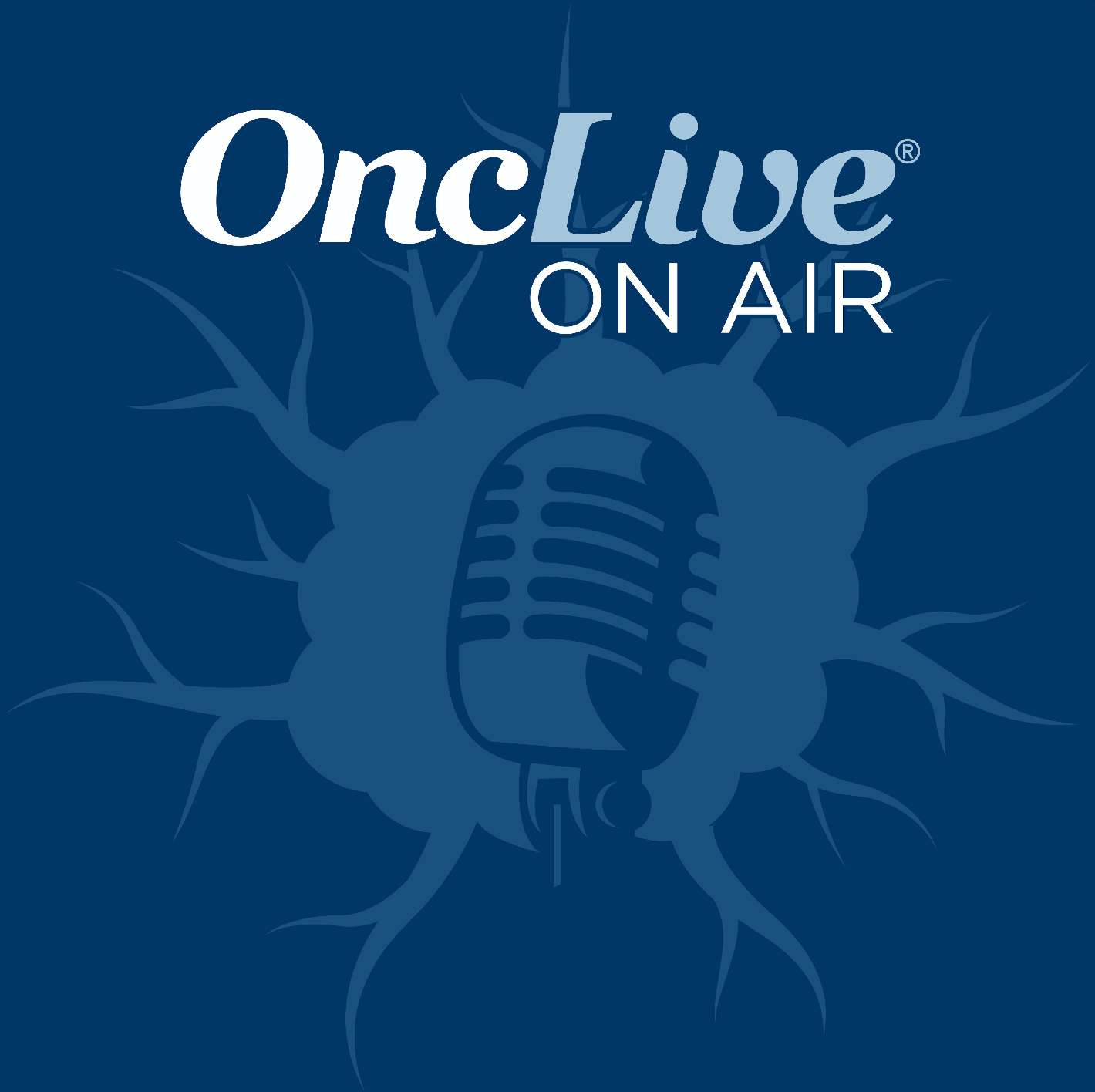Commentary
Article
Vemurafenib Plus Cobimetinib Demonstrates Near 100% Response Rate in Papillary Craniopharyngiomas
Author(s):
The combination of vemurafenib and cobimetinib led to a 94% partial response rate or better in 16 patients with newly diagnosed BRAF-mutated papillary craniopharyngiomas.
Priscilla Brastianos, MD

The combination of vemurafenib (Zelboraf) and cobimetinib (Cotellic) led to a 94% (95% CI, 70%-100%) partial response rate or better in 16 patients with newly diagnosed BRAF-mutated papillary craniopharyngiomas, according to findings from a phase 2 trial (NCT03224767) published in the New England Journal of Medicine.1
The patient who did not respond discontinued treatment after day 8 due to grade 3 anaphylaxis and grade 2 acute kidney injury. Notably, all patients who completed at least 1 cycle of therapy experienced a response within 4 months after starting treatment with the combination. Additionally, the median reduction in tumor volume was 91% (range, 68%-99%).1
At a median follow-up of 22 months (95% CI, 19-30), the estimated 12- and 24-month progression-free survival (PFS) rates were 87% (95% CI, 57%-98%) and 58% (95% CI, 10%-89%), respectively, and overall survival was 100% at both time points. Notably, no patient had disease progression during protocol treatment with the combination, although three patients experienced progressive disease during the follow-up period after discontinuation of therapy. No patients had died at the data cutoff.1
Among 7 patients who received no treatment after discontinuing treatment with vemurafenib plus cobimetinib, 6 displayed no evidence of tumor progression at a median follow-up of 23 months (95% CI, 19-not reached).1
“All patients who completed one or more cycles of therapy responded to treatment, which is the highest response rate to date of any medical therapy for brain tumors,” Priscilla Brastianos, MD, the director of the Central Nervous System Metastasis Center at Mass General Cancer Center in Boston, Massachusetts, and the first author of the study, said in a news release. “These unprecedented results signal a paradigm shift for targeting brain tumors because they show that, with the right target and the right drugs, precision medicine can have a dramatic impact on brain tumors.”2
The phase 2 study enrolled patients with BRAF V600E–mutated papillary craniopharyngioma with a minimum diameter of 10 mm in orthogonal dimensions. Previous radiation or systemic therapy for craniopharyngioma were not permitted. Patients also needed to be at least 18 years of age, have an ECOG performance status of 2 or less, normal organ and marrow function, no evidence of intracranial hemorrhage within 4 weeks of enrollment, and an interval of at least 21 days since surgery. 1
Once enrolled, patients received vemurafenib at a dose of 960 mg orally twice daily for 28 days and cobimetinib at a dose of 60 mg orally once daily for 21 days in 28-day cycles. Definitive therapy via surgery or radiation, the recommended regimen of which was 54 Gy at 1.8 Gy per fraction delivered daily, occurred following treatment with the combination for 4 cycles. If patients derived benefit from vemurafenib plus cobimetinib, continued treatment after 4 or 5 cycles was allowed with permission from the study chairs if definitive radiation or surgery was not recommended due to serious concern about adverse outcomes or if the patient declined. In the event the continuation of the combination was approved, treatment continued until disease progression, unacceptable adverse effects (AEs), or withholding of drug therapy for more than 28 days.1
Patients were treated with a median of 8 cycles (range, 0-19), all of which included at least 1 dose of one or both study agents. The median number of cycles consisting of both vemurafenib and cobimetinib was 6 (range, 1-12).1
The primary end point was objective response rate by central radiologic review of prespecified volumetric criteria. Secondary end points included PFS, overall survival, response defined by enhancing volume as well as non-enhancing volume, duration of response, and AEs.
At baseline, the median age was 49.5 years (range, 33.0-83.0). Most patients were White (69%), female (56%), non-Hispanic (94%), and had an ECOG performance status of 1 or less (94%). Patients previously underwent less than 50% subtotal resection (31%), at least 50% subtotal resection (25%), biopsy only (25%), or a complete resection with recurrence (19%). The median baseline tumor volume was 2.75 cm3.1
Findings from an exploratory analysis showed that patients who underwent tumor volume evaluation (n = 14) experienced a median gross volume of 3.8 mL (range, 0.2-23.4) before treatment compared with 0.3 mL (range, 0.0-3.2) after treatment with vemurafenib plus cobimetinib. Before treatment, all 14 tumors abutted the optic chiasm and 6 did so after receiving the combination.1
Eleven patients provided a total of 32 plasma samples that were evaluable for cell-free DNA analysis with 4 samples testing positive for circulating BRAF V600E. Two patients had a positive sample at the end of treatment and samples positive for a BRAF mutation before and after treatment and on day 1 of cycle 3 only were reported in 1 patient each. Two patients with detectable BRAF mutations at the end of treatment experienced progressive disease after treatment was ceased.1
Regarding safety, grade 3 AEs were reported in 12 patients and 2 patients experienced grade 4 AEs of increased creatinine kinase level and hyperglycemia. Furthermore, 3 patients discontinued treatment due to AEs with a median treatment duration of 31 days.1
Grade 3 AEs consisted of maculopapular rash (35%), prolonged corrected QT interval (12%), dehydration (12%), increased alkaline phosphatase levels (12%), allergic reaction (6%), anaphylaxis (6%), hypertension (6%), acne or acneiform rash (6%), hemorrhage involving the central nervous system (6%), hyperglycemia (6%), hyponatremia (6%), pain (6%), other skin or subcutaneous disorder (6%), and other general or administration-site disorder (6%).1
“This study demonstrated that national, biomarker-driven trials are feasible for patients with brain tumors,” Brastianos said in the news release. “Moving the needle on treating rare brain tumors truly requires a multidisciplinary and multi-institution effort, and we were able to highlight that through our research.”2
References
- Brastianos PK, Twohy E, Geyer S, et al. BRAF-MEK inhibition in newly diagnosed papillary craniopharyngiomas. N Engl J Med. 2023;389(2):118-126. doi:10.1056/NEJMoa2213329
- Rare brain tumor responds to targeted tumor treatment with ‘unprecedented’ success. News release. Mass General Brigham. July 12, 2023. Accessed July 31, 2023. https://www.massgeneralbrigham.org/en/about/newsroom/press-releases/rare-brain-tumor-responds-to-targeted-treatment-with-unprecedented-success








